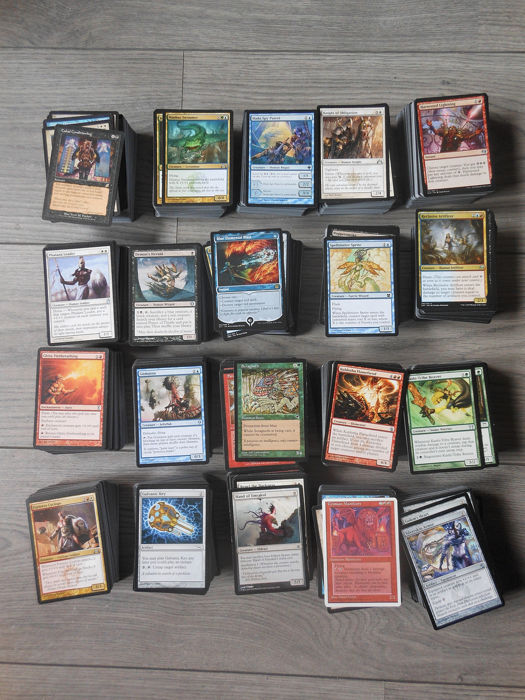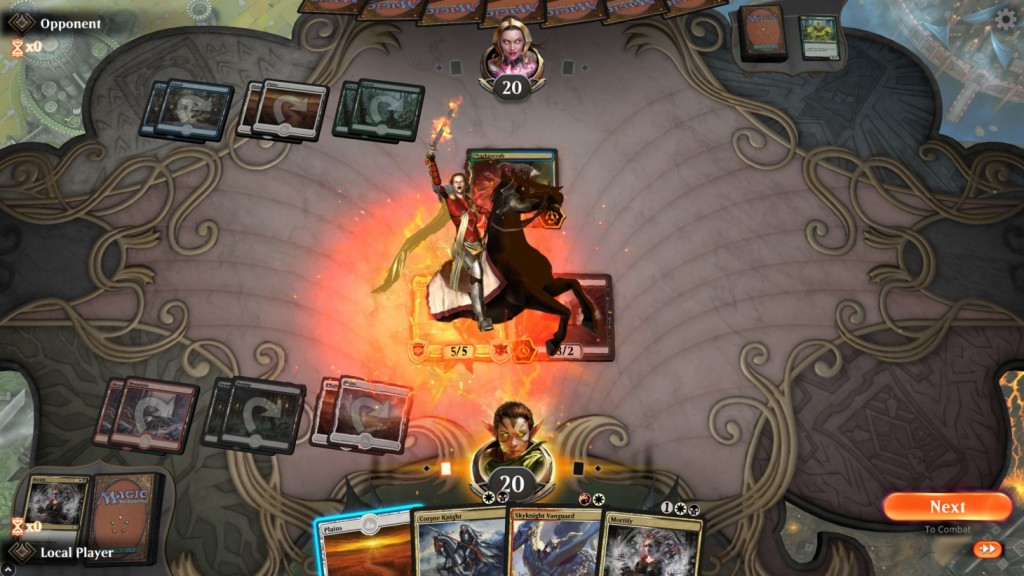
Magic Game Rules
How many players play? From 2 and more.
Recommended player age: 13+
Number of cards: depending on the type of tournament, no less than 40 or 60 cards.
Who won? When your opponent runs out of life points or cards.
Main Card Meanings
To delve into the game rules and learn to play, you first need to get acquainted with the cards. There are indeed many types, names, and meanings, so at first glance, it might be a bit harder to grasp everything, but after playing a few games and feeling the joy of the game, it will immediately become easier.
Each card has a name (English: name), which is indicated in the upper left corner of the card. Additionally, “Magic: the Gathering” cards can be divided into 6 types:
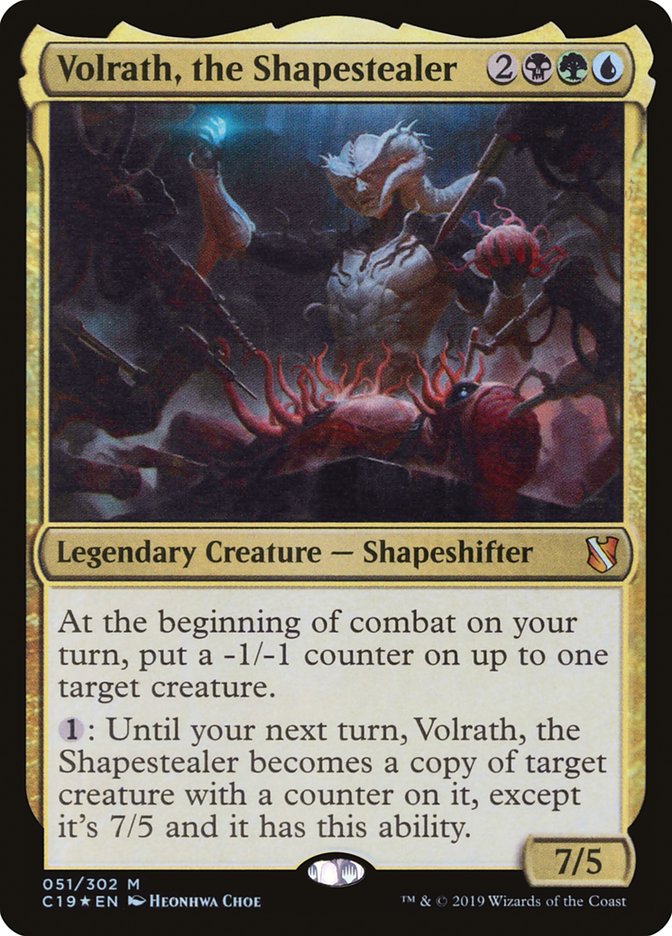
Creatures (English: creatures)
Enchantments (English: enchantments)
Artifacts (English: artifacts)
Sorceries (English: sorceries)
Instants (English: instants)
Land (English: land)
All cards, except for lands, can cast spells.
The card type (English: card type) is indicated below the card's image. It symbolizes what kind of spell from the above-mentioned types your card has. If it is a creature card,its type is also indicated next to it, for example, “dragon”, so “creature dragon” means that your spell is a creature, and its type is a dragon. Next to the card type, the expansion symbol (English: expansion symbol) is always indicated, which reveals from which card set/edition/print your card is. Each symbol comes in three colors – black, which indicates that your card is common, silver symbolizes an uncommon card, and gold – a rare one.
At the bottom, you will find the card description (English: text box), which tells about the magical world of the card and describes the card's abilities (English: abilities), which need to be activated and the activation cost specified in the description needs to be paid. Additionally, on the left side of the card, the card's attack (English: power) and defense power (English: toughness) are indicated, and the numbers help decide which creature will win in a fierce battle.
One of the most important card attributes is mana cost (English: mana cost), whose magical energy is needed for casting spells. It is indicated in the upper right corner of the card. Mana can be colorless or one of the magical colors, which we will talk about a bit later (white, blue, black, red, or green). The color is indicated by the symbol next to it. Additionally, if you want the spell to work, you need to pay the specified mana cost. Usually, it is paid with land cards. If you need to pay colored mana, you will see the color symbol next to it:
- Plains card creates white mana;
- Island card – blue;
- Swamp card – black;
- Mountain card – red;
- Forest card – green.
By tapping these cards, you will create the required mana.
Magical Colors
As we mentioned, there are five main card colors in the game, each with its own meanings – green, red, blue, black, and white. Each of these colors symbolizes different things and represents different aspects, allowing you to explore the colorful, unique, and magical world of the game. Additionally, each color's mana is obtained from different types of land cards – forests, mountains, islands, swamps, and plains. Certain spells can also provide mana.
It is no secret that each color has not only certain powers but also weaknesses, and decks are usually mixed from two or more colors. This way, the risks that are fundamentally hard to withstand are minimized.
More about colors:
White color symbolizes order, adherence to laws, the idea of community, it heals and protects. This color also embodies fanaticism, reckless devotion, which is reflected in the game by spells. They can destroy many enemies at once, stop them, and try to explain that they are behaving badly, aiming to teach opponents a lesson. The cards restore the player's life points, send armies of weaker creatures into battle, and white mages sometimes summon very strong heroes.
Black in many cultures is the color of death, gloom, and bad things. In this game, it is the color of destruction, greed, loss of life, and dirty deals. This card comes from eerie, gloomy, and dark swamps where unimaginable horrors live. Black cards can “knock out” cards from the opponent's hand, resurrect terrible creatures from the dead, and, of course, destroy all the opponent's creatures. No matter how fierce and mysterious they are, black card mages cannot deal with enchantments and artifacts.
Blue – the color of the clear sky and deep sea – symbolizes scientific progress, the desire for knowledge and understanding. Of course, it has not only positive but also negative consequences – it is characterized by manipulation, tricks, and illusions. These blue magic cards can cancel the opponent's spells, summon strange water and air creatures that destroy the enemy within a few turns after appearing.
Red, as you probably guessed, is the color of passion, hot fire, aggressiveness, and impulsiveness, which comes from the unbearably hot core of the world. Red cards harm the opponent and his creatures (usually mountain dragons or goblins), destroy the opponent's lands, and have many spells that work by flipping a coin, i.e., randomly. This passionate card is very effective, acting and winning the fastest.
Green, like many plants growing on earth, symbolizes life, growth, and prosperity. This color comes from the lungs of the earth – lush forests. At the same time, this color card symbolizes primitiveness and brutality, rarely using complex strategies to achieve victory. The goal of the majestic nature's element mages and creatures is to draw life and strength and quickly gather the required amount of needed color mana for valuable spells.

Starting Magic the Gathering Game!
When playing “Magic: the Gathering” strategy and luck become equal – not only perfect knowledge of the game but also a certain percentage of luck affects the final game result. So, let's start!
The essence of the game is a duel, and the player's strength depends on the ability to assess the situation, choose the most correct strategy and cards. What cards each player has – such spells he knows. Each game represents a battle between powerful and mysterious wizards/mages (eng. Duelists and Planeswalkers).
Game Start
Each player, as mentioned earlier, has their own custom-built deck, meaning they devise their own game strategy. The game begins with players drawing 7 cards from the top of their shuffled deck. These 7 cards are called the hand, and the remaining deck is called the library. Sometimes, the drawn cards may not be favorable to the player, in which case they can return the cards to the deck, shuffle, and draw new cards from the top. Important! When drawing cards again, only 6 cards can be chosen. With each new draw, the number of cards decreases. Once the cards are chosen, the game begins.
The cards in the hand are kept face down, and those intended to be played are turned face up and placed on the table. The area on the table where the cards are placed is called the battlefield. During the game, used cards are slightly tilted to the side. Some used cards go to a pile called the graveyard, while others are placed in the stack. The stack is common to all players and contains enchantments, instants, and abilities. Important! Cards in the stack wait until they can be used, in game slang, “resolve”.
Each player also has 20 life points, and the game continues until one player reaches 0 life points. Additionally, the game can end if a player runs out of cards in their library.
Special Turns
Each turn consists of 5 phases – beginning, main, combat, second main, and ending.
Beginning Phase. This is the first phase where tapped cards are untapped. Additionally, spells or abilities cannot be used in this phase. In the second part of the beginning phase, necessary cards go to the stack. In this phase, players can play activated abilities and instants, which will be explained later. In the third part of the beginning phase, players draw the required cards.

Main Phase. This phase follows the beginning phase. In this phase, land cards can be played, but keep in mind that only one land card can be played per turn. In the main phase, your opponent can only play activated abilities and instants, while you can play any spells and abilities.
Combat Phase. After the main phase comes the combat phase, where instants can be played at the beginning. After instants, the attacker chooses which creature will attack or if no attack will occur. The chosen attacking creature card is tapped. When the attacker is declared, the defender is chosen – the opponent indicates which creature will block the attacking creature. When the opponent declares the defender, instants and activated abilities are played. In the subsequent game, the attackers reduce the defending player's life points by the attack power of the attacking creatures.
Second Main Phase. After the combat phase, the main phase is played again.
Ending Phase. In this phase, players can immediately play activated abilities and instants. Later, the player must choose which cards to “bury” in the graveyard and which 7 cards will remain in hand. This rule applies if more than 7 cards are held in hand. In this phase, all damage dealt to creatures is removed, and effects that were supposed to last until the end of the game cease. In this stage, abilities or spells cannot be played unless triggered abilities are activated.
Let the Magical Spells Unfold!
“Magic: the Gathering” uses special “hints” – magical tricks called spells and abilities. It's important to remember and know that there are several types of abilities:
Static Abilities. When this card is played, your ability takes effect immediately and ensures continuity, in other words, a long-term effect. A static ability loses its power only when the card is removed from play.
Activated Abilities. It's important to note that this card needs to be activated and the activation cost specified in the description must be paid. This card also has a colon, indicating certain game conditions – if there is a tapped arrow symbol before the colon, it means this card needs to be tapped. When the card is tapped, it is considered used and can only be played once. There are cards without a colon symbol that can be played as needed.
Triggered Abilities. These cards specify a condition – something will happen only when the situation described on the card occurs. For example, if character x appears in the game, you gain/lose x additional life points, etc. When the described event occurs (even multiple times), this card goes to the stack. It's very important to follow the instructions and rules specified on the cards, otherwise penalties may apply!
To use a spell or ability in the game, certain special rules must be known and followed:
- Inform your opponent which ability or spell card you will use.
- If it's a spell, you must show this card to the other player.
- If the description of the ability or spell uses the word target, it means you must choose a target – a specific card that the spell or ability will affect.
- If the card description starts with “choose one of…”, it means you must choose one of the provided options.
- If your card's spell is an enchantment, you must choose which card you want to enchant.
- If you play an ability, you must pay the activation cost, and if it's a spell – the mana cost.
- After performing these actions, your card immediately goes to the stack. Exception! Cards with mana abilities do not go to the stack because the player immediately receives that mana. Also, cards with static abilities do not go to the stack because the ability takes effect immediately, and land cards without spells do not go to the stack.
Activated abilities and instants can be played at any time – whether there are cards in the stack or when priority belongs to the opponent – these spells have no exceptions or special rules. As mentioned, other abilities and spells can only be played in the main and second main phases, as well as when there are no cards in the stack and when the player has priority to take a turn, discard a card, or pass. Of course, if you pass – the turn goes to your opponent.
When the turn goes to the opponent, they can place their spells on the stack on top of your abilities or spells. If they also decide to pass, the turn to play a card goes back to you.
When both players pass, the ability or spell on top of the stack resolves, and its benefits are gained. It is important to note that cards resolve from top to bottom, so the last card placed on the stack will resolve first. Additionally, you need to check the target of the resolving spell or ability to see if it is still valid (a target is invalid if it no longer meets the requirements of the ability or spell). Once spells (sorceries) or instant spells (instants) resolve, they go directly to the graveyard. Other cards may remain in play; they just need to be tapped to indicate they have been used.
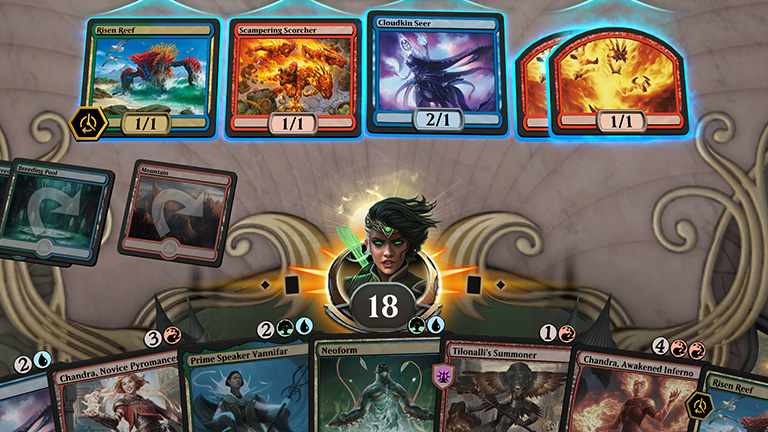
Magic the Gathering cards – incredibly valuable card collections
Card enthusiasts not only play with special cards, participate in tournaments, watch broadcasts, but also collect them. “Magic: the Gathering” card collection is a matter of pride for every fan of this card game!
Interestingly, more than 11,000 completely different, unique game cards have been created for the game today, and each year an additional 3-4 different card sets are released – about 700 cards in total. The main set is called the “Core Set,” and it is released every two years. Moreover, colorful cards were created and illustrations drawn by more than 400 famous artists from various countries. Each card is a work of art, created from magical inspiration.
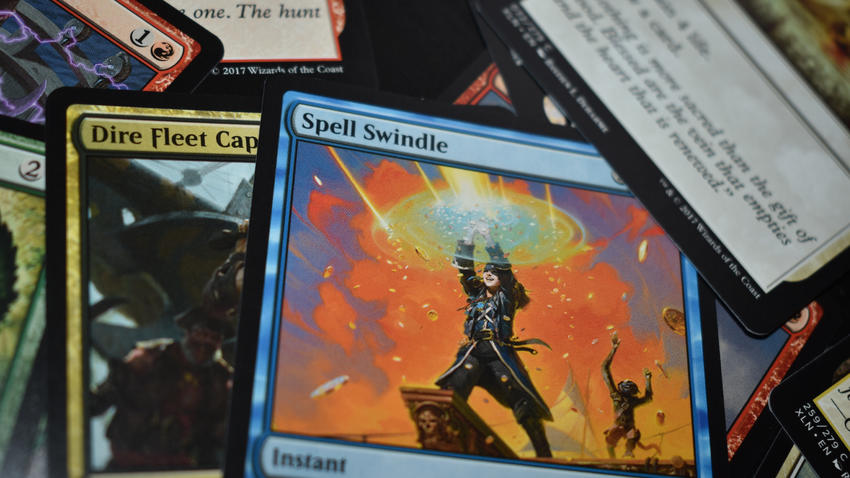
Due to their artistry and meticulous work, many “Magic: the Gathering” cards are very valuable and expensive – beautiful, old, rare, and very carefully illustrated cards are sold online for very high sums. For example, the impressive Black Lotus card can cost over 10,000 US dollars. Of course, you can also buy very cheap cards that cost just a few cents, but they are also very important – the value of a card is assessed based on its power, demand, and rarity.
Collectors of these cards can mostly buy them in online stores where they are sold individually – you can choose the rarest cards. Moreover, buying cards separately can be cheaper than buying a themed deck (which consists of 40 or 60 cards), a tournament pack (45 cards), or a booster pack (15 cards).
Additionally, the game “Magic: the Gathering” is translated into 11 languages – English, French, German, Spanish, Portuguese, Italian, Russian, Japanese, Korean, Simplified Chinese, and Traditional Chinese.
Magic: the Gathering and the mysterious history of the game
“Magic: the Gathering” (lit. magic: gathering) – the most popular magical card game in the world, which is sometimes simply called “Magic” or by the abbreviation MTG. The collectible card game in the style of magical fantasy was released by the company Wizards of the Coast back in the last century – in 1993. It was created by then-mathematics doctoral student Richard Garfield, who initially named the game “Mana Clash”.
From the very first card sets, the game became extremely popular
First, it became popular among role-playing game (RPG) enthusiasts, where players identify with a fantastical, imaginary character, traveling, fighting, and acting on their behalf in an invented, fantastical world. Later, many other game fans, especially those who love various types of games requiring clear, logical, and strong strategy, became interested in it. Thus, fantasy and a clear game-winning plan are the main aspects of the game.
“Magic”'s popularity led to the emergence of many other similar games – both physical and computer-based. It seems that players were attracted by the rather unusual genre of the game at that time – magical fantasy, which aims to create a unique and mysterious setting, with action taking place in times reminiscent of the Middle Ages, where technology is replaced by fantasy, magic, spells, and enchantments. To create a mysterious atmosphere, elements of various mythologies, magic, supernatural phenomena are often used, and unlike in science fiction, modern technologies are abandoned. It is no surprise that in 1994 the game won an award for the best magical fantasy or science fiction game of 1993.
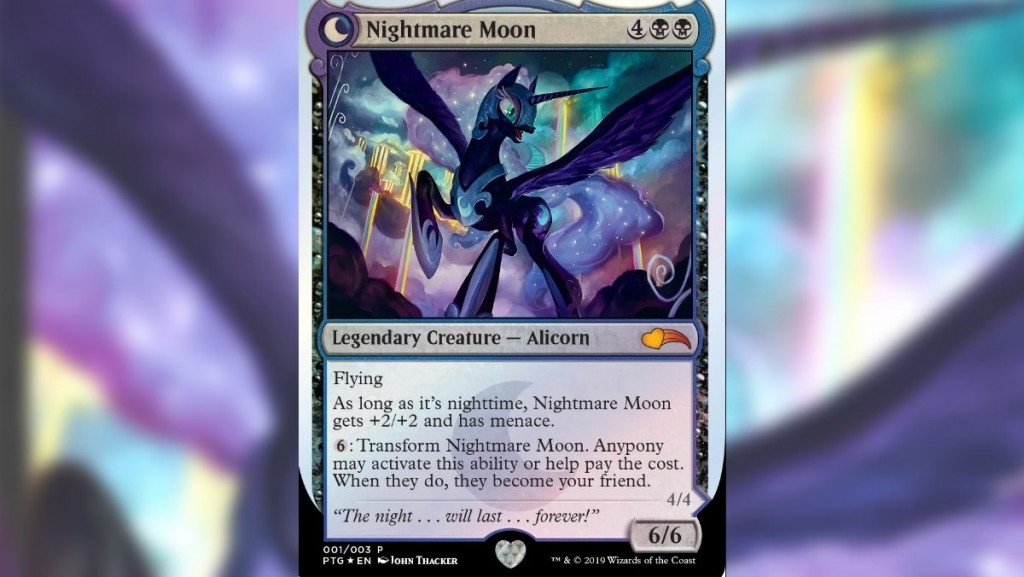
A few years later, the wave of the game's popularity only grew, and to satisfy the desires of game enthusiasts, international “Magic: the Gathering” tournaments – “Pro Tour” – began to be organized, with a prize pool today reaching up to 1 million US dollars! In 2002, with the flourishing of information technology, the game moved to the virtual space.
Thus, it is interesting and somewhat mysterious that this fantasy-filled game was the first and remains the most popular non-computer game of this genre in the world – it is played by approximately over 20 million players, and the print runs of the cards are simply unimaginable – in 2018, the company “Wizards of the Coast” announced that they had printed over 20 billion “Magic: the Gathering” cards in just 8 years.
Breathtaking Magic the Gathering tournaments
This strategic game attracts thousands of players from around the world to test their skills in international tournaments – some play and strategize, while others simply watch their broadcasts and learn the secrets of the game. Moreover, a special organization “Duelists Convocation International,” also known by the abbreviation DCI, was created to organize, supervise, plan, judge, and provide all information for these magical collectible card game tournaments. In 2005, the first tournament took place in Lithuania, which gathered even 1000 game enthusiasts from all over the country.
Tournaments are organized in two main types – “Constructed” and “Limited.”
Additionally, “Standard,” “Vintage,” “Legacy,” “Extended,” and others are organized.
More about the tournaments:
- In “Constructed” tournaments, a special tournament format applies, which means that each player plays with their own deck of cards, assembled according to certain restrictions. The main restriction is the exclusion of very old cards from the game. In most “Constructed” tournaments, the deck must contain at least 60 cards. Additionally, in a special, self-assembled deck, there cannot be more than 4 cards with the same English name. This rule does not apply to “basic lands” cards.
- In “Limited” tournaments, players receive various different cards and must assemble a deck of at least 40 cards of impressive value, with which they then play.
- Another tournament format, “Standard,” allows the use of cards only from the last two released card blocks and the latest “Core Set.” As mentioned earlier, at least three or four new card releases come out each year, so players participating in tournaments, if they want to play well and have a deck that meets all requirements, must constantly invest and update.
- Some tournaments, such as “Vintage” and “Legacy,” allow the use of almost all cards. Here, another problem arises – truly strong decks use very old, no longer printed cards, which, due to their collectible value, rarity, and strength in the game, are usually extremely expensive, with prices reaching tens or even hundreds of dollars per unit.
Sometimes it happens that players aiming for victory copy the decks of tournament champions – professionals – learn their game strategy, and take credit for their achievements. This phenomenon in the “Magic: the Gathering” world is called “Net Decking.”
You have probably realized that the game is magical and enchantingly appealing to all card game enthusiasts – both beginners and professionals. Do not hesitate, try this game online, and if you like and are captivated by it – be sure to acquire beautiful, colorful, spirit-of-wonder-inspired cards and dive into the magical and unique world of the game!
More card games can be found here.




